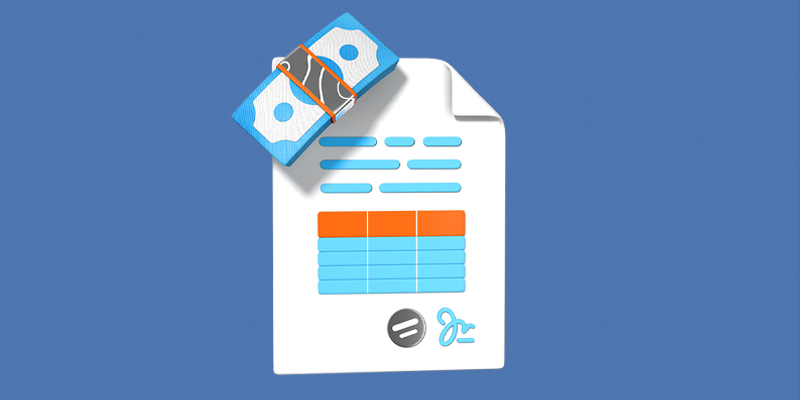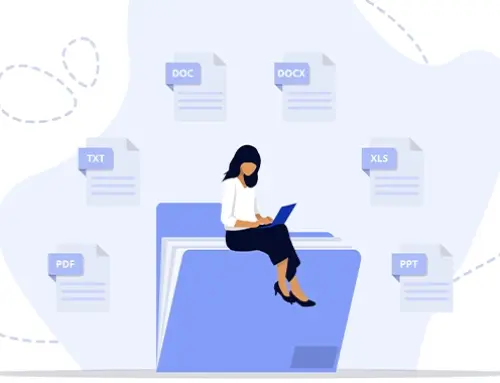Contents
Unlock Explosive Law Firm Efficiency
This attorney billing cheat sheet gives concrete steps to capture and collect more billable work. Also, the present attorney billing cheat sheet offers real-world advice to guide law firms to simplify billing, enhance compliance, and boost revenue. Tighter margins and higher client expectations in 2025 make optimized billing essential. Moreover, this cheat sheet covers billing models and software tactics to boost revenue
Why the Effective Attorney Billing Cheat Sheet Matters
Accurate, transparent billing prevents lost revenue and disputes and supports sustainability. Poor billing causes revenue loss and disputes. For example, recent data shows that the average small firm lawyer bills only 37% of an eight-hour day, and of those hours 14% never get invoiced, and another 10% go uncollected. This means barely one-third of the workday translates into revenue. Improving attorney billing directly boosts profitability by capturing more billable time and reducing write-offs. An accurate attorney billing cheat sheet ensures compliance with ABA rules and reduces fee disputes. Moreover, clear billing builds client trust. When clients understand how they are charged, they are more likely to pay on time and feel satisfied with the services.
| Metric | Average (2019) | Average (2024) |
| Utilization Rate (billable hours per day) | 30% | 37% |
| Realization Rate (billed hours of those worked) | 81% | 88% |
| Collection Rate (paid vs. billed) | 88% | 91% |
Table 1: Key Law Firm Billing Performance Metrics – Small firm averages have improved from 2019 to 2024
Regularly tracking these metrics helps you spot inefficiencies and set concrete improvement goals for your firm.

Comparing Key Attorney Billing Models
Each attorney billing model affects client experience and revenue. Here is a cheat sheet comparison of common attorney billing models:
| Billing Model | Best For (Case Types) | Key Benefit | Potential Drawback |
| Hourly Billing (time-based) | Unpredictable or ongoing matters (e.g., complex litigation, ongoing corporate advice) | Pay-for-what-you-use fairness; flexible to scope changes. | Cost uncertainty for clients requires meticulous time tracking. |
| Flat Fee (fixed price) | Routine, predictable services (e.g., wills, incorporations, uncontested divorces) | Price certainty for client; simpler invoicing and fewer fee disputes. | Risk of underestimation for attorney; scope creep can reduce profitability. |
| Contingency Fee (percentage of outcome) | Cases seeking monetary damages with uncertain outcomes (e.g., personal injury, wrongful termination) | Access to justice for clients with no upfront cost; aligns attorney’s incentive with client’s success. | Elevated risk for firm (no payment if unsuccessful); requires careful case selection and tracking of expenses. |
| Retainer Billing (advanced deposit) | Work ongoing or to secure availability (e.g., general counsel services, complex litigation) | Ensures cash flow and commitment upfront; funds held in trust as work is done. | Requires diligent trust accounting; client may feel anxious as retainer depletes, needs communication. |
| Subscription Model (recurring fee) | Continuous, broad-scope services (e.g., small business legal plans, startups) | Steady monthly revenue; convenience for clients with budgeable legal costs. | Not yet standard in legal industry; defining service scope can be challenging to avoid overuse. |
Table 2: Comparison Between Different Attorney Billing Models
Each billing model should be matched to the client and matter. In contrast, a flat fee works well when the work is predictable – it eliminates billing surprises and can reduce pushback on price. Contingency fees are powerful for injury or other high-stakes cases: the client pays only if you win, but the firm must absorb costs and delay payment until resolution. Retainers (often in the form of an advance payment into a trust account) provide security for both client and attorney. The client reserves the attorney’s time, and the lawyer draws from the retainer as work progresses, replenishing it as needed (in an “evergreen” retainer arrangement). Subscription legal services, an emerging trend, offer clients ongoing help for a fixed monthly fee – this can build long-term client relationships and a reliable income stream, though it requires clearly defining what services are covered each month.
Making the Most of Each Billing Method
With hourly billing, log time in 0.1-hour increments as you work. Record time in small increments (e.g., 0.1 hour = 6 minutes) and do it in real-time if possible – lawyers who wait until week’s end to reconstruct their hours risk missing billable work. Set rates based on experience, market, and overhead. Give clients an estimated range and note variability. For flat fees, carefully scope the work before quoting a price. Analyze similar past cases or use industry benchmarks so your flat fee covers the effort involved and remains profitable. Put the scope in writing to avoid “scope creep,” and if the client’s needs expand beyond the flat fee, communicate about adjusting the fee or handling extras on an hourly basis. In contingency cases, thorough case screening is critical – evaluate the likelihood of success and potential recovery because the firm’s payment is at stake. Maintain detailed records of time and expenses, even if you are not billing them regularly, as you will need to justify your contingency fee in court or to the client at the end. With retainers, always deposit advance fees in a trust account and move funds to operating only as you earn them (per legal ethics rules). Keep the client updated on how funds are used and when replenishment is needed. This initiative-taking communication prevents clients from feeling blindsided by a depleted retainer. Finally, subscription services require delivering consistent value – since clients pay a fixed amount regardless of usage, ensure they feel they are getting their money’s worth through regular check-ins, reports, or included services. Clearly outline the terms of the subscription (e.g., how many consultations or documents per month) to set boundaries that protect your time.
Best Practices for Efficient Legal Billing
Many common billing frustrations—like lost billable hours or late client payments—can be alleviated by the measures below. Incorporate the following best practices into your firm’s billing routine:
Track Time Accurately and Promptly
Unrecorded time is lost revenue. Commit to accurate, contemporaneous time tracking. This could mean using a digital timer or a mobile app to log hours as you work on tasks. Avoid reconstructing time later—track contemporaneously. Those forgotten 15-minute emails or calls add up significantly over a year. If you still track time manually, develop a disciplined habit or consider adopting legal timekeeping software. Modern billing software can run in the background on your computer or phone to capture activities (emails, document drafting, calls) so you do not rely purely on memory. Precise time records also bolster your invoices if a client ever questions a charge, because you can provide detailed narratives. After all, you cannot bill what you do not record.
Invoice Consistently and Quickly
Consistency in invoicing is key to maintaining cash flow and reducing client confusion. Law firms should establish a regular billing cycle (monthly is common, or biweekly for short matters) and stick to it religiously. Delayed invoices confuse clients and delay payment. Set clear expectations with clients that, for example, you bill on the last day of each month for that month’s work, then make sure you do it. Aim to send out invoices as soon as the billing period ends or a matter concludes. Prompt invoices remind clients of completed work and accelerate payment. Invoices should also be detailed and self-explanatory. List each task, the date, who performed it, the hours, and the amount. A well-structured invoice reduces follow-up questions and speeds up payment. Inconsistent or infrequent billing, on the other hand, can frustrate clients and give the impression that the firm is disorganized. Leverage billing software to automate invoice generation at set intervals, so no cycle is missed. Regular, predictable invoicing turns your firm’s work into revenue like clockwork. Regular billing improves on-time payment.
Offer Flexible Payment Options
Accept electronic payments to speed collections. This means accepting electronic payments, such as credit cards or ACH transfers, and using online payment links on your invoices. Clients are more likely to promptly pay an invoice if they can click a secure link and pay by card or bank transfer in seconds, as opposed to writing and mailing a check. Law firms that use online payment platforms get paid significantly faster – median payment times can drop from two weeks to under a week with e-payments in place. Ensure your payment system complies with bar regulations (especially for trust accounts) by using reputable legal-specific processors. In addition, consider offering payment plans or installation options for larger bills. For instance, you might allow a client to pay a $5,000 invoice for five monthly installments of $1,000. Structured plans like these reduce financial strain for clients while improving your cash flow. Always communicate payment options clearly on the invoice (“We accept Visa, Mastercard, ACH, etc., and offer installment plans upon request”). By reducing friction in the payment process, you will reduce the number of collections calls you need to make.
Communicate and Collaborate with Clients
Communicate accrued fees regularly. Successful firms treat billing as part of client service, keeping clients informed and inviting questions. One best practice is to provide regular updates on case progress and the corresponding fees accrued, especially for long-running matters. This might be a summary in a monthly status email or during a check-in call (e.g., “We spent 10 hours on discovery this month, and things are on track.”). Such updates prevent sticker shock when the invoice arrives because the client sees the work behind the bill. Encourage clients to ask questions about their bill. If a client does dispute a charge, approach it as a problem to be solved cooperatively. By being responsive and transparent, you show clients that you value fairness. When clients feel that the billing is done with them rather than to them, they are more likely to pay without contention and to trust your firm for future needs. Open communication about fees shows that your firm has nothing to hide.
| Pitfall (What Goes Wrong) | Consequence | Solution |
| Waiting days to record time | Lost billable hours | Log time immediately (use automatic timers) |
| Inconsistent invoicing schedule | Client confusion; delayed payments | Set a regular billing cycle (e.g., monthly) |
| Sparse details in invoices | Client questions and disputes | Provide clear, itemized billing descriptions |
| Only accepting checks/mail payments | Slower collections | Offer convenient online payment options |
Table 3: Common Billing Pitfalls and How to Solve Them
Leveraging Technology to Streamline Billing
Use legal billing software to automate time capture, invoicing, and compliance. An all-in-one system like RunSensible can automate many billing tasks that traditionally eat up lawyers’ time and cause errors. Here’s how technology turbocharges the attorney billing process:
- Automated Time Tracking: Instead of relying on memory or manual timers, software can automatically track the time spent on emails, document editing, calls, and more. Every billable moment gets captured, which means lawyers bill more hours that would otherwise be lost. This not only increases revenue but also frees attorneys from the tedium of timesheets. By ensuring no billable work is overlooked, firms have reported significant boosts in utilization rates after adopting automated tracking.
- Easy Invoice Generation and Delivery: Legal billing software allows you to generate polished, detailed invoices in a few clicks using your recorded time and expense entries. You can set up invoice templates with your branding and preferred level of detail, including the sample billing language that fits your firm’s policies. Batch billing for multiple clients at once (bulk billing) is a huge time-saver at month’s end. Additionally, software can email invoices to clients directly through a secure portal and even automate gentle payment reminders. The result is a faster billing cycle with minimal administrative labor – what might take hours of compiling and proofreading bills each month can happen in minutes.
- Integrated Payments and Accounting: Today’s legal billing platforms often integrate online payment processing, meaning clients can pay invoices via credit card or ACH through a link, and the payment is automatically recorded in your system. Some solutions, like RunSensible, offer built-in credit card processing that is compliant with trust accounting rules (ensuring, for instance, that retainer deposits go to the proper trust account). Integration with accounting software or built-in legal accounting features means that once a bill is paid, your financial records update instantly. No more duplicative data entry between a billing program and QuickBooks, for example. This integration reduces errors and ensures that financial reports are always up to date.
- Billing Compliance and Audit Trails: Legal practice management software also helps with compliance. Many platforms include safeguards like trust account management features and user permission controls to prevent irregular billing. The software can provide an audit trail of all billing actions, so you can see who edited an invoice or wrote off a charge. In short, a good billing platform improves accuracy and efficiency and frees up your staff’s time to focus on legal work instead of paperwork. Moreover, many billing systems include compliance safeguards like trust accounting features to help your firm meet ethical and regulatory requirements.
Emerging Trends in Attorney Billing
The legal billing landscape continues to evolve, driven by client demand for value and predictability. Alternative fee arrangements (AFAs) and subscription-based legal services are two notable trends gaining traction. Corporate and savvy clients increasingly seek cost certainty—consequently, more law firms are experimenting with non-hourly billing models. For example, one industry report found that 28.5% of Employment & Labor matters were billed under an AFA in 2024, up from 24.7% in 2022. While hourly billing still dominates, many firms now offer capped fees, success fees, or blended hourly rates to stay competitive. Meanwhile, some attorneys are introducing subscription legal services, where clients pay a recurring monthly fee for a bundle of legal assistance. These subscriptions provide steady income and appeal to budget-conscious clients, though they require clearly defined service scopes to manage expectations. Both trends reflect a broader push toward value-based billing and client-centric pricing. Forward-looking law firms may benefit from incorporating such innovative billing options when appropriate, as flexibility in billing can attract clients and set your practice apart.
For context, a 2019 survey found that while 96% of law firms use some non-hourly pricing, only 13% of them said over one-fifth of their revenue comes from those alternative fees. This shows that hourly billing continues to be the mainstay of law firm revenue, even as new pricing models slowly gain ground.
Another noteworthy development is the adoption of online payment systems for legal bills, which dramatically speeds up collections. One study found that law firms offering electronic payment options got paid in a median of 6 days—versus 14 days for firms relying on traditional payment by check.
Final Thoughts
Effective billing practices are the backbone of a thriving legal practice. By implementing the strategies in this attorney billing cheat sheet, your firm can enhance client satisfaction and ensure fair compensation for work. The fundamentals are straightforward: be accurate, be transparent, and be efficient. Accurate time tracking and expense recording means no work goes unbilled and clients are only charged for actual services rendered. Transparent billing policies and detailed invoices build trust and reduce disputes. Efficient processes—like consistent invoicing schedules and prudent use of technology—improve cash flow and reduce overhead. Beyond the finances, conscientious billing reflects your firm’s professionalism and dedication to ethics. It strengthens client relationships and protects your reputation, giving your practice a competitive edge.
Also, mastering attorney billing cheat sheet is an ongoing effort rather than a one-time task. Make a habit of regularly reviewing and refining your billing procedures and stay open to new tools or client preferences that emerge. Even small improvements, recovering a few extra billable hours each month or speeding up collections by a few days—will compound overtime into significantly greater revenue and stability. For example, capturing just one extra billable hour per week—say $300/hour—adds over $15,600 in revenue per year. By continuously applying this attorney billing cheat sheet and updating it with new insights, your firm can secure financial growth and foster long-term success in the years ahead.
Take Control of Your Law Firm Billing with RunSensible
Ready to upgrade your firm’s billing process? RunSensible gives attorneys the tools to bill better and faster all in one platform. From automated time tracking that captures every billable minute to custom invoice templates with clear attorney billing terms, RunSensible streamlines each step. Accept online payments through a secure client portal and integrate trust accounting to stay compliant effortlessly. Powerful dashboards and reports let you monitor key metrics like realization rates and pinpoint areas to improve. Do not let outdated billing practices hold your firm back – leverage RunSensible’s modern legal billing features to boost efficiency, compliance, and profitability in your practice. Get started with RunSensible to transform your billing.
FAQs
What billing methods do law firms use most often?
Law firms most commonly use hourly billing, flat fees, and contingency fees. Hourly billing means charging an agreed hourly rate for time worked – it is prevalent for litigation and complex matters. Flat fees involve charging a set price for a specific service (like drafting a contract or managing an uncomplicated immigration case), which clients appreciate for its predictability. Contingency fees are typical in personal injury and similar cases; the client pays a percentage of any recovery rather than paying upfront.
How can attorneys ensure accurate billing for their services?
Accurate billing starts with recording time and expenses promptly and clearly. Lawyers should log hours as they work (or use automatic time-tracking software) so nothing is forgotten. Each entry should have a detailed description, so clients understand what they are billed for. Track expenses in real time as well, with proper notes or receipts. It is also wise to review your entries regularly (or have a colleague double-check) to catch any errors or inconsistencies.
Why is transparency important in attorney billing cheat sheet?
Transparent billing fosters trust and prevents misunderstandings between attorneys and clients. When clients understand exactly what work was done and why they are being charged, they are more likely to consider a bill fair and pay promptly. Transparency begins with a clear fee agreement outlining rates and billing schedules. It continues with detailed, itemized invoices that show the work performed for each charge.
How does legal practice management software improve law firm billing?
Legal billing software automates and simplifies the entire billing workflow. It automatically tracks billable time and expenses, ensuring no work is missed. It then generates invoices in a few clicks based on those entries, saving administrative effort and applying rates consistently without errors. Quality software also helps catch mistakes, for example, flagging duplicate entries or unusual charges before invoices go out.
What is a retainer, and how should it be managed in billing?
A retainer is an upfront fee a client pays to secure a lawyer’s services. The attorney holds these funds (usually in a trust account) and then bills fees against the retainer as work is done. Retainers can be managed in diverse ways. Some are evergreen retainers, where the client agrees to replenish the retainer whenever it drops below a certain balance, this ensures the lawyer always has funds to draw from. Other times, a retainer is a one-time lump sum intended to cover a specific matter, with any unused portion refundable to the client.
Sources
- https://www.attorneyatwork.com/solo-and-small-firm-lawyer-hourly-rates/
- https://www.americanbar.org/groups/law_practice/resources/tech-report/2024/seven-billing-practices-law-firms-can-use-to-collect-payments-faster/
- https://centerbase.com/blog/law-firm-billing/
- https://www.lexisnexis.com/community/pressroom/b/news/posts/lexisnexis-counsellink-releases-2025-trends-report-showing-large-law-command-of-partner-rates-share-of-wallet
Disclaimer: The content provided on this blog is for informational purposes only and does not constitute legal, financial, or professional advice.






